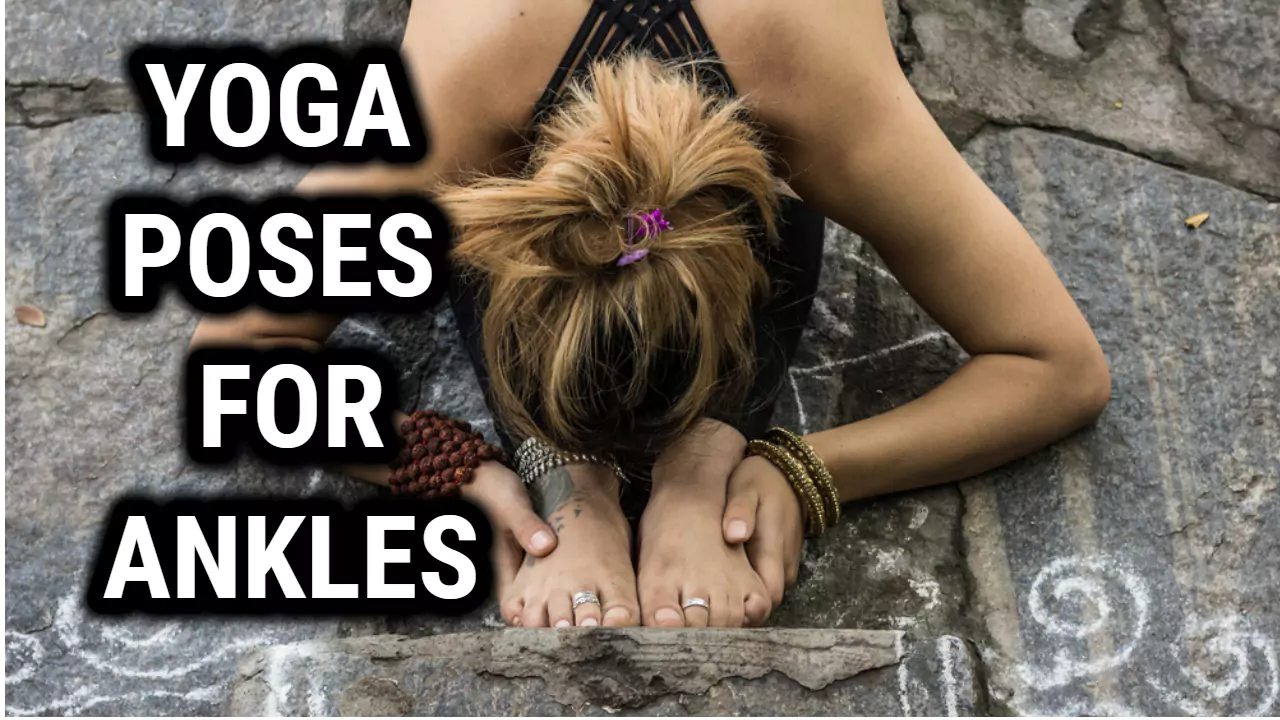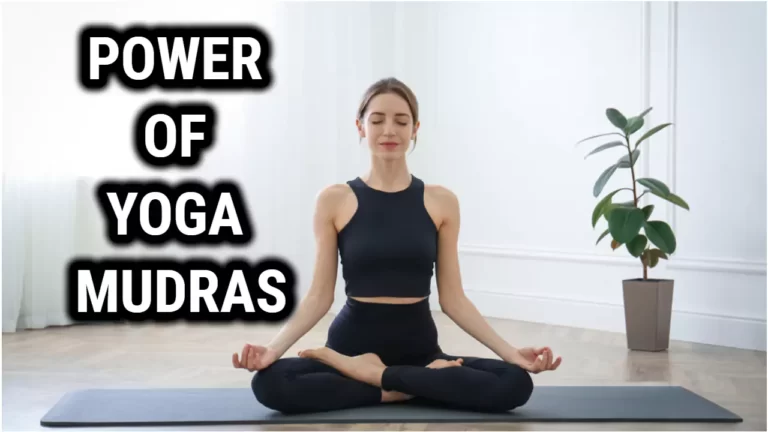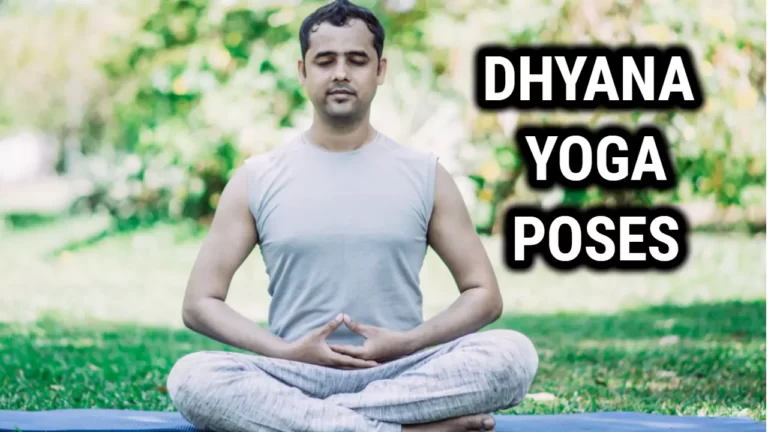Stretch and Strengthen Your Ankles with These Yoga Poses

Yoga has been practiced for centuries as a way to promote physical and mental well-being. One of the many benefits of yoga is its ability to improve joint health, including the ankles. The ankles are often overlooked in yoga practice, but they play a crucial role in maintaining balance and stability.
There are several yoga poses that can help stretch and strengthen the ankles. These poses can be especially beneficial for those who spend a lot of time on their feet or suffer from ankle pain or stiffness. By incorporating these poses into a regular yoga practice, individuals can improve ankle mobility and reduce the risk of injury.
Some of the best yoga poses for ankles include Garland Pose, Half Moon Pose, and Downward-Facing Dog Pose. These poses can help stretch the muscles and ligaments surrounding the ankles, while also building strength and stability in the joint. With regular practice, individuals can improve their overall ankle health and enjoy the many benefits of a strong and flexible lower body.
Why Ankles Are Important in Yoga
When people think about yoga, they often think about the flexibility of the spine, the strength of the core, and the balance of the body. However, one of the most important parts of the body in yoga is the ankles. The ankles are the foundation of many yoga poses and they play a crucial role in maintaining balance and stability.
The ankles are made up of a complex network of bones, ligaments, and tendons. They are responsible for supporting the weight of the body and allowing movement of the feet. In yoga, the ankles are constantly being used to support the body in standing poses, balance poses, and even seated poses.
Strong and flexible ankles are essential for maintaining proper alignment in yoga poses. When the ankles are weak or stiff, it can lead to poor posture, misalignment, and even injury. By incorporating yoga poses that specifically target the ankles, practitioners can improve their overall balance, stability, and flexibility.
Additionally, the ankles are an important part of the body’s energy system. In traditional Chinese medicine and Ayurveda, the ankles are believed to be connected to the root chakra, which is associated with grounding and stability. By focusing on the ankles in yoga practice, practitioners can improve their connection to the earth and feel more grounded and centered.
Common Ankle Issues in Yoga
Yoga is a great way to improve flexibility, balance, and strength, but it can also put stress on your ankles. Here are a few common ankle issues that can arise during yoga practice:
- Strains and Sprains: Yoga poses that involve balancing on one foot, such as Tree Pose or Warrior III, can put strain on the ankle and increase the risk of sprains if not performed correctly.
- Plantar Fasciitis: This condition causes pain in the heel and bottom of the foot, and can be aggravated by yoga poses that involve standing or stretching the feet, such as Downward Facing Dog or Forward Fold.
- Achilles Tendonitis: This condition causes pain and stiffness in the back of the ankle and can be aggravated by yoga poses that involve deep stretches or intense pressure on the calf muscles, such as Warrior I or Camel Pose.
If you experience any pain or discomfort in your ankles during yoga practice, it’s important to listen to your body and modify or skip poses as needed. Using props such as blocks or straps can also help support your ankles and prevent injury.
It’s also important to warm up your ankles before starting your yoga practice. Simple ankle rotations, toe curls, and ankle flexes can help improve blood flow and range of motion in the ankle joint.
By being mindful of these common ankle issues and taking steps to prevent injury, you can continue to enjoy the many benefits of yoga practice while keeping your ankles healthy and strong.
Also Read: Yoga Vs Boxing – Which One Is More Effective?
Yoga Poses for Ankles
When it comes to yoga, it’s important to not forget about your ankles! These joints play a crucial role in maintaining balance and stability, and can help prevent injuries. Here are some yoga poses that can help stretch and strengthen your ankles:
- Garland Pose: Also known as Malasana, this pose involves squatting down with your feet close together and your heels on the ground. This pose can help stretch your ankles, as well as your hips and groin.
- Half Moon Pose: This pose involves standing on one leg while extending the other leg out to the side. This pose can help strengthen your ankles, as well as improve balance and stability.
- Downward Facing Dog: This classic yoga pose involves starting on your hands and knees, then lifting your hips up and back. This pose can help stretch your calves and ankles, as well as your hamstrings and spine.
- Warrior II Pose: This pose involves standing with your feet wide apart and turning one foot out to the side. This pose can help strengthen your ankles, as well as your legs and core.
- Tree Pose: This pose involves standing on one leg and placing the sole of the opposite foot on the inner thigh of the standing leg. This pose can help improve balance and stability, as well as strengthen your ankles.
- Plank Pose: This creates stability throughout all parts of the body while simultaneously creating strength in the ankles.
- Reclined Big Toe Pose: Reclined big toe pose is a great stretch for the ankles. To do this pose, begin by lying on the floor on your back. Bring the legs up so that the feet are pointing towards the ceiling. Then, flex the right foot and grab the big toe with your index and middle fingers. Gently pull the toe towards you and extend the knee, allowing the ankle to get a gentle stretch. Hold for 30 seconds to one minute, then switch sides and repeat.
Remember to always listen to your body and go at your own pace when practicing yoga. If you have any concerns or injuries, be sure to consult with a medical professional before attempting any new poses.
Precautions Before Practicing Yoga Poses for Ankles
Before practicing yoga poses for ankles, it is important to take certain precautions to prevent injuries and ensure a safe practice. Here are some things to keep in mind:
- Consult a doctor: If you have any pre-existing medical conditions or injuries, it is important to consult a doctor before starting any new exercise routine, including yoga.
- Warm up: Before practicing any yoga poses, it is important to warm up your body. This can include gentle stretches, such as ankle circles and toe taps, to prepare your ankles for the poses.
- Start slow: If you are new to yoga or have not practiced yoga poses for ankles before, start with simple poses and gradually work your way up to more advanced poses. Pushing yourself too hard too soon can lead to injuries.
- Listen to your body: Pay attention to how your body feels during the poses. If you experience pain or discomfort, ease out of the pose and take a break. Never push yourself beyond your limits.
- Use props: Props such as blocks and straps can help you modify poses and make them more accessible. Use them as needed to support your practice.
By taking these precautions, you can practice yoga poses for ankles safely and effectively, and reap the benefits of a stronger and more flexible ankle joint.
Related Read: What Are The Different Foot Yoga Poses?
Conclusion
Yoga is an excellent way to improve ankle strength and flexibility, and prevent injuries. By incorporating ankle-focused poses into your yoga practice, you can increase stability, balance, and range of motion in your ankles. Some of the best poses for the ankles include Garland Pose, Half Moon Pose, and Staff Pose.
It is important to remember that yoga should be practiced mindfully and with proper alignment. Always listen to your body and avoid pushing yourself too hard. If you experience any pain or discomfort during a pose, back off and modify the pose or seek guidance from a qualified yoga teacher.
Incorporating ankle-focused yoga poses into your regular practice can have a positive impact on your overall physical health and well-being. By taking care of your ankles, you can improve your ability to move and perform daily activities with ease and grace.






